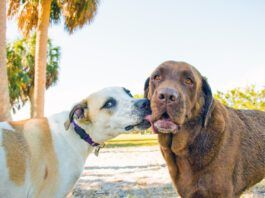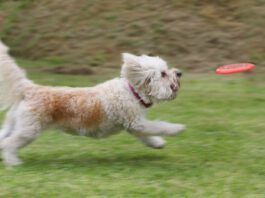How To Bond With Your Dog
Building a relationship with your dog takes time and effort. Although it’s plenty of fun to bond with a new dog, your four-legged friend might not adore you instantly.
Dog Sports for Reactive Dogs
Dog Sports. These two words conjure up a vision of fun for you and your dog. But what if your dog is reactive to either other dogs or humans or both? Are some dog sports better than others for dogs with reactive behaviors? The answer is yes. We will explain which sports are better choices for reactive dogs and which ones are probably best left alone.
Why Do Dogs Run Away?
If you call your dog and she refuses to come to you, you have a potentially dangerous situation, if she is not in a safe enclosed area. Stay calm. Do not chase her. You cannot outrun her, and any movement toward her may be perceived as engaging in a game of chase.
How to Stop a Dog From Barking
Barking can be incredibly endearing or amazingly annoying. Some dogs bark the entire way around an agility course. Other dogs bark every time someone rings the doorbell. There are many types of dog barks, and some are more problematic than others.
Dare You Double-Dog Leash?
I cannot count how many times clients with more than one dog have asked me whether it’s an option to use a leash coupler or two-dog leash. My usual response is probably not, but that is not always the case.
How to Help a Poorly Socialized Dog
Dogs are naturally social beings, but that doesn’t mean every puppy leaves the litter with social skills or that trauma can’t derail an adult dog who previously socialized .
How to Help a Dog with Separation Anxiety
Separation anxiety (SA), also known as separation-related distress, is one of the most common behavioral problems in pet dogs with some estimates stating that...
How to Calm Down a Hyper Dog
Many dog owners know the frustration of dealing with a hyperactive or anxious dog. Whether your dog is constantly bouncing off the walls, excessively barking, or displaying signs of anxiety, understanding the underlying causes of hyperactivity and anxiety, and taking a proactive approach to their care, can help improve their overall wellbeing and help you calm down a dog.
Understanding Prey Drive in Dogs
If you have ever lived with a Greyhound, Jack Russell Terrier, Weimaraner, or another working breed, you’ve probably lived with a dog that has a strong instinct to chase anything that moves. In short, you’ve had a dog with a strong prey drive.
Do Dogs Think? (and other curiosities about the dog brain)
Early philosophers like Descartes to propose that dogs were nothing more than mindless automatons merely responding to instincts and physiological signals. We’ve come a long way since the 15th century though. Over the past two decades, more and more research has pointed to the fact that, contrary to that old notion that dogs are just “dumb animals,” they have an acute ability to think and reason.
Introducing a New Dog to a Jealous Dog
Jealousy is normal. Dogs get jealous because you are a resource and the source of all good things in your dog’s life. It’s naturally ingrained in a dog to not want to share, and your dog may act aggressive. This also has been seen when a new baby arrives home! Your dog doesn’t want to share the attention. But, with dogs, if your dog already truly likes other dogs and enjoys their company, it’s not a difficult proposition to introduce the concept of sharing you to that dog.
How To Train an Aggressive Dog
An aggressive dog can be dangerous and a liability in the event she hurts a person or another animal. The good news is that aggressive behavior can be successfully modified using a combination of good management and humane behavior modification.


















